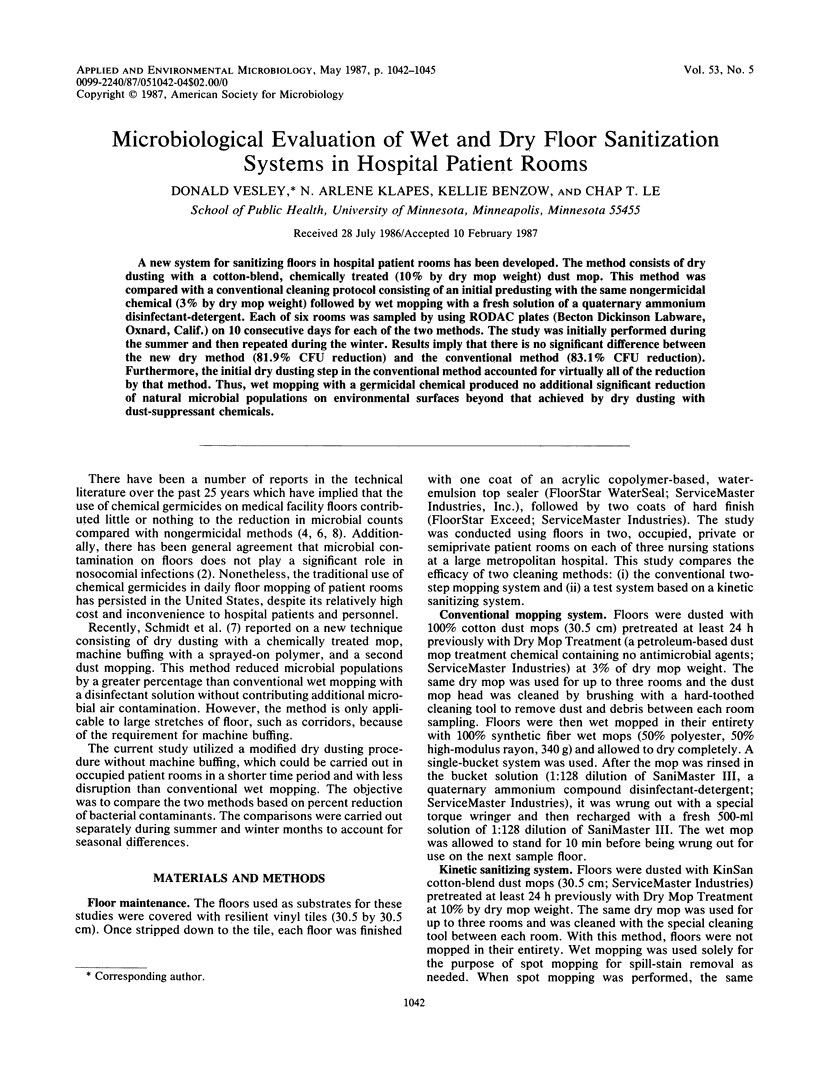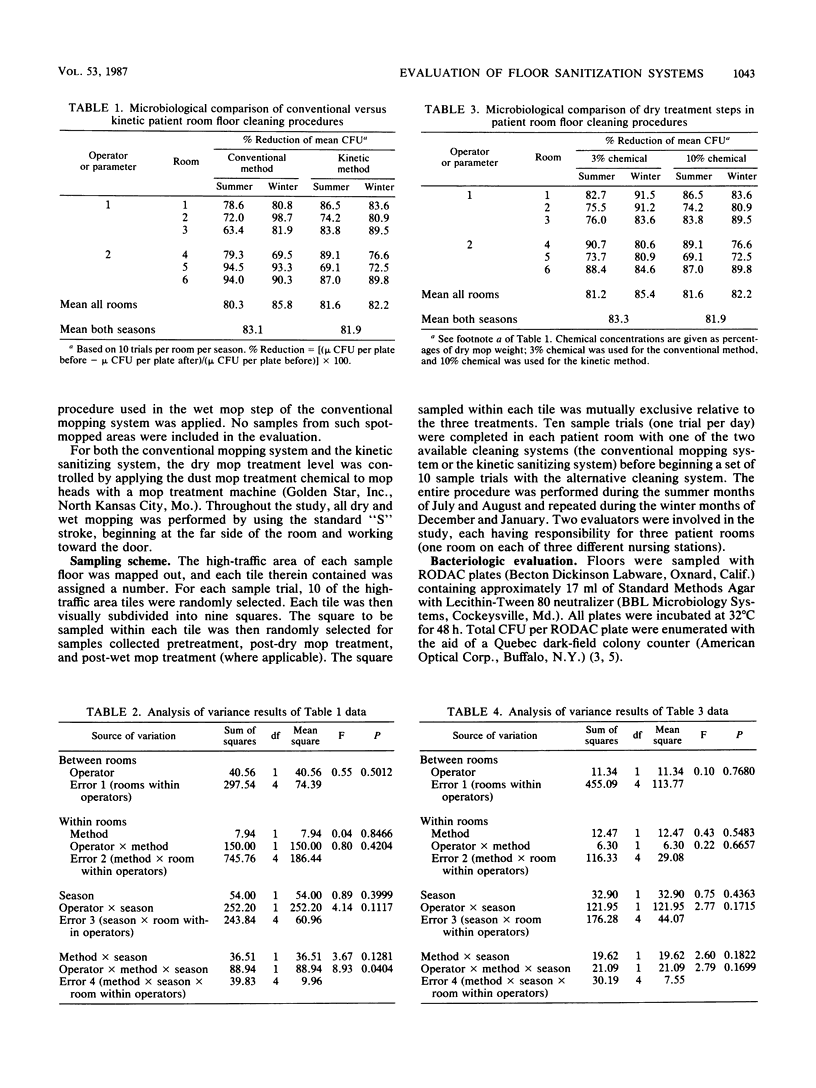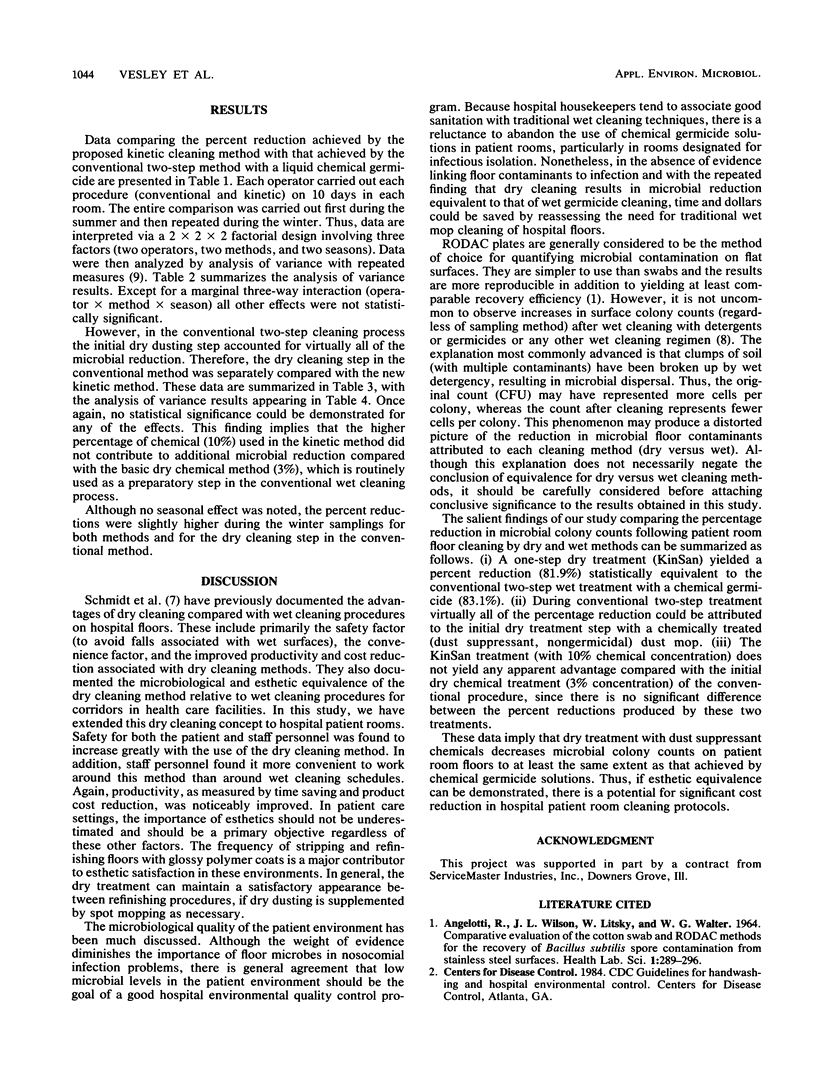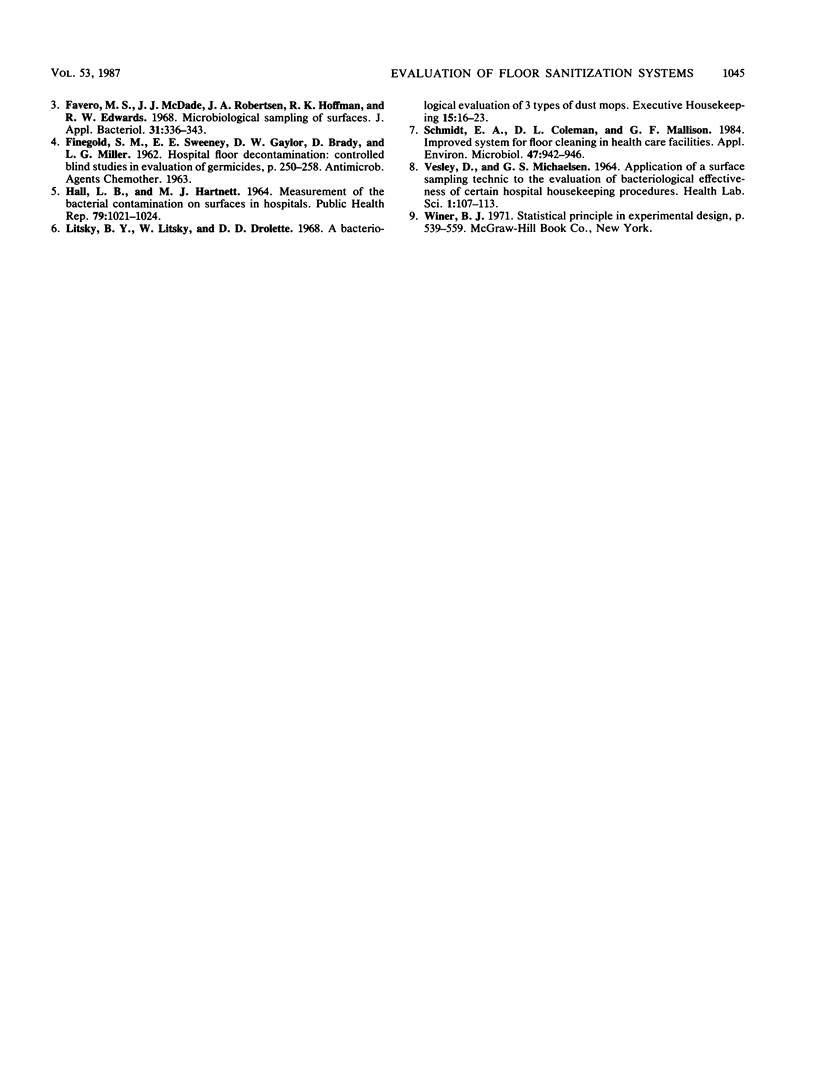Abstract
A new system for sanitizing floors in hospital patient rooms has been developed. The method consists of dry dusting with a cotton-blend, chemically treated (10% by dry mop weight) dust mop. This method was compared with a conventional cleaning protocol consisting of an initial predusting with the same nongermicidal chemical (3% by dry mop weight) followed by wet mopping with a fresh solution of a quaternary ammonium disinfectant-detergent. Each of six rooms was sampled by using RODAC plates (Becton Dickinson Labware, Oxnard, Calif.) on 10 consecutive days for each of the two methods. The study was initially performed during the summer and then repeated during the winter. Results imply that there is no significant difference between the new dry method (81.9% CFU reduction) and the conventional method (83.1% CFU reduction). Furthermore, the initial dry dusting step in the conventional method accounted for virtually all of the reduction by that method. Thus, wet mopping with a germicidal chemical produced no additional significant reduction of natural microbial populations on environmental surfaces beyond that achieved by dry dusting with dust-suppressant chemicals.
Full text
PDF



Selected References
These references are in PubMed. This may not be the complete list of references from this article.
- Angelotti R., Wilson J. L., Litsky W., Walter W. G. Comparative evaluation of the cotton swab and Rodac methods for the recovery of Bacillus subtilis spore contamination from stainless steel surfaces. Health Lab Sci. 1964 Oct;1(4):289–296. [PubMed] [Google Scholar]
- Favero M. S., McDade J. J., Robertsen J. A., Hoffman R. K., Edwards R. W. Microbiological sampling of surfaces. J Appl Bacteriol. 1968 Sep;31(3):336–343. doi: 10.1111/j.1365-2672.1968.tb00375.x. [DOI] [PubMed] [Google Scholar]
- HALL L. B., HARTNETT M. J. MEASUREMENT OF THE BACTERIAL CONTAMINATION ON SURFACES IN HOSPITALS. Public Health Rep. 1964 Nov;79:1021–1024. [PMC free article] [PubMed] [Google Scholar]
- Schmidt E. A., Coleman D. L., Mallison G. F. Improved system for floor cleaning in health care facilities. Appl Environ Microbiol. 1984 May;47(5):942–946. doi: 10.1128/aem.47.5.942-946.1984. [DOI] [PMC free article] [PubMed] [Google Scholar]
- VESLEY D., MICHAELSEN G. S. APPLICATION OF A SURFACE SAMPLING TECHNIC TO THE EVALUATION OF BACTERIOLOGICAL EFFECTIVENESS OF CERTAIN HOSPITAL HOUSEKEEPING PROCEDURES. Health Lab Sci. 1964 Apr;1:107–113. [PubMed] [Google Scholar]


